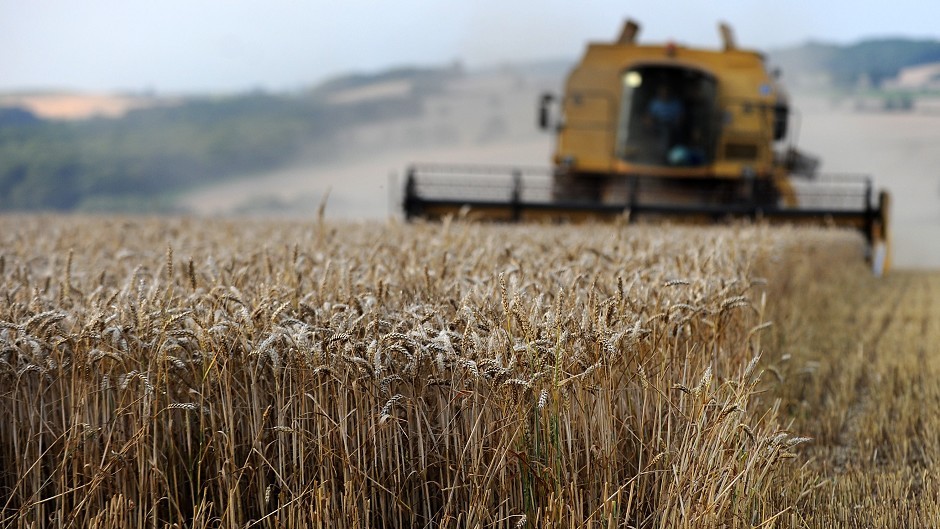Many farmers and crofters will need to provide supporting evidence with their Single Application Form this year in order to qualify for support, claims a leading expert.
According to Jeremy Moody – adviser to the Scottish Agricultural Arbiters and Valuers Association (SAAVA) – genuine farmers are at risk of being locked out of the system as a result of failing the ‘active farmer’ test.
The rules, which are determined by the EU, state that a farmer will not be an “active farmer” if more than half of his land is land that is ‘naturally kept’, even if he does meet the minimum activity required by the Scottish Government on it. This is a separate test from the activities on the negative list.
The Scottish Government has deemed that all rough grazing – land in payment regions 2 and 3 – is land that is ‘naturally kept’ and requires that where this is more than half a producer’s land, they must either adopt a minimum stocking rate or carry out an environmental assessment of the land in each calendar year of the regime.
The minimum stocking rate, based on only female animals, works out at around one ewe per three hectares, and requires the land to be stocked for at least 183 days in the year.
It will then be for the farmer to show that any lower stocking rate is justified by the carrying capacity of the land or an agri-environment agreement.
Mr Moody warns that this is a one-chance test; farmers must ensure they have the supporting evidence as there is no way back from failing this test.
The negative list activities are airport, railway services, water works, real estate services and permanent sports and recreational grounds.
The Scottish Government had hoped to add sporting estates to this list but this week said EU rules meant this was not possible.
Where the business – the claimant – is also operating one of these activities, it risks not being classed as an ‘active farmer’. No other non-farming activities pose this risk.
A producer caught by this may re-qualify as an active farmer if they can pass any one of three tests to get back in to the system.
Firstly, an income test must show that annual direct subsidy support accounts for at least 5% of total non-agricultural activity income.
Non-agricultural activity income is understood to include money received for renting land out, contracting and on-farm diversification. It does, however, exclude income from processing your own produce on farm.
“You are likely to need a letter from an accountant detailing the relevant total values, to be submitted for May 15,” said Mr Moody.
The second test requires the applicant to show that their agricultural activities are “not insignificant”.
This means that total income from production, direct subsidy support and rural development funding accounts for at least one third of total income. Mr Moody warns that this is also likely to require an accountant’s certificate.
Lastly, a producer can opt to show that agricultural activity is a principal business object.
How this is interpreted is down to the Scottish Government, which states that for a legal person – a company, or partnership – its founding documents state that the principal business activity is agricultural.
A claimant may be required to produce an affidavit which states “the principal business activity or object consists of exercising an agricultural activity”.
Supporting evidence will also be required for producers who are not automatically allocated new Basic Payment Scheme (BPS) entitlements based on having successfully claimed a Single Farm Payment in 2013.
A farmer who did not hold entitlements in 2013, but was actively farming that year, must provide proof of production in order to receive BPS entitlements.
Mr Moody said: “These people can apply now using the allocation of entitlements form, but they must submit documentary evidence by May 15.”
Proof of production evidence includes census returns, flock or herd records and farm accounts.
Equally, those wishing to apply through the National Reserve or the Young Farmer scheme will have to provide supporting evidence with their application.
For the Young Farmer scheme, a producer must be no more than 40 years old in 2015 and at least 16.
They must also be setting up as the ‘head of holding’ for the first time or have done so in the past five years.
“You will need to submit documentary evidence by May 15, to confirm date of birth and that the farmer is ‘head of the holding’,” said Mr Moody. “That means having management control of the business.”
New entrants will also have to show that they started farming in 2013 or later, by submitting evidence to confirm the date that agricultural activity started.
